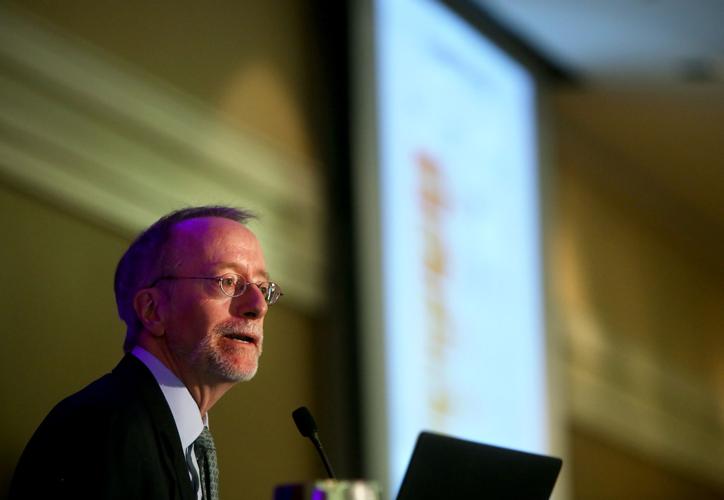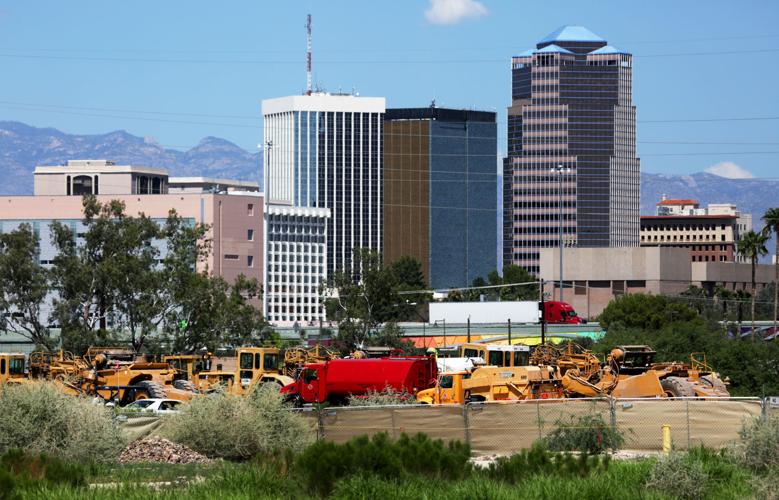Believe the buzz, not the numbers.
That was the unexpected message UA economist George Hammond delivered in his 2018 economic forecast.
An economist telling us to ignore data and trust our feelings?! Well, it wasn’t that simple, but Hammond noted that the preliminary survey data delivered by the Bureau of Labor Statistics and used by state of Arizona in its employment reports don’t seem to add up. For some of the months in late 2017, they’ve shown job losses in the Tucson area compared to the same time last year, at a time when we were supposed to be growing steadily.
“Before you get too concerned about that, I think that those estimates are way too pessimistic,” Hammond told us Friday during a luncheon at the Westin La Paloma. “I think that data, which is preliminary data, is going to be revised up significantly. Once it is revised up, that’s going to square a lot better with the buzz around town about how Tucson is doing.”
I’ve been writing about those state reports and how they paint a more dismal picture than the optimistic one local officials have been painting. The most recent state report, for example, published Nov. 16, says the Tucson area’s labor force declined by 3,400 people from October 2016 to October 2017. My assumption has been that those reports reflect reality, one that undermines the perception Pima County’s economy is improving.
But Hammond says that’s doubtful. And it’s not just about the optimistic buzz generated by Caterpillar’s announcement that it is building a headquarters here, or by Raytheon’s major expansion, or by local space businesses like Vector and World View that are building headquarters.
First, he said, it’s important to remember the survey information collected by the Bureau of Labor Statistics is preliminary. It will be revised in March using a higher-quality data set.
Second, he said, there’s an anomaly that has been affecting the jobs reports for months. In the year ending in the third quarter of 2016, the professional and business-services category showed a gain of 1,000 jobs. But that same category showed a decline of 2,000 jobs for the year ending in the third quarter of 2017.
“That’s a 3,000 job swing,” Hammond said Friday. “Generally, if something like that happens in Tucson, that’s in the air, it’s in the papers, people are talking about that kind of shift. Seeing that and not having that show up in the papers is weird, and it makes us wonder about what that preliminary data really shows us.”
In fact, a business information specialist at the Eller College’s Economic and Business Research Center, Valorie Rice, collects Arizona news stories about businesses hiring people and laying them off. These job announcements have been predominantly positive recently.
It’s not that all is sweetness and light across Tucson. I spoke with Robert Durnal, branch manager of Remedy Staffing, whose agency specializes in supplying employees for professional-services and industrial jobs.
“I see far more people who are looking for work who are out of work than the opposite,” he said. “Earlier in the year, there was a slight pickup on the industrial side of staffing. Toward the middle of the year there was an uptick in professional and business services. Now it’s kind of flat.”
The Pima County One Stop offices have also seen steadily increasing use of services like job training offered through the federal Workforce Innovation and Opportunity Act. The total enrolled in the program’s services in Pima County have gone from 3,294 in 2014-2015 to 3,949 in 2015-2016 to 4,586 in 2016-2017.
So far in 2017-2018, those numbers have stayed pretty steady.
In other words, the number of people seeking help with getting jobs or improving job skills has increased, perhaps a sign of more underemployed Tucsonans. It could also, of course, reflect people returning to the workforce, and it does include an increasing number of youth joining the workforce.
I spoke with a couple of other economists, Doug Walls who leads the state’s economic research office, and Lee McPheters of Arizona State University’s Seidman Institute. Both agree that future reports and more reliable data could make this year’s rash of economic uncertainty in the Tucson area seem like a sniffle that never turned into a cold.
Walls noted that the more reliable data take longer to appear. McPheters said, “Overall, the dip is a bit extreme and doesn’t really accord with what anyone is expecting.”
So maybe the Tucson area should return to the mildly optimistic buzz we were feeling earlier this year amid all those corporate announcements . At least until the revised numbers come back in March.






